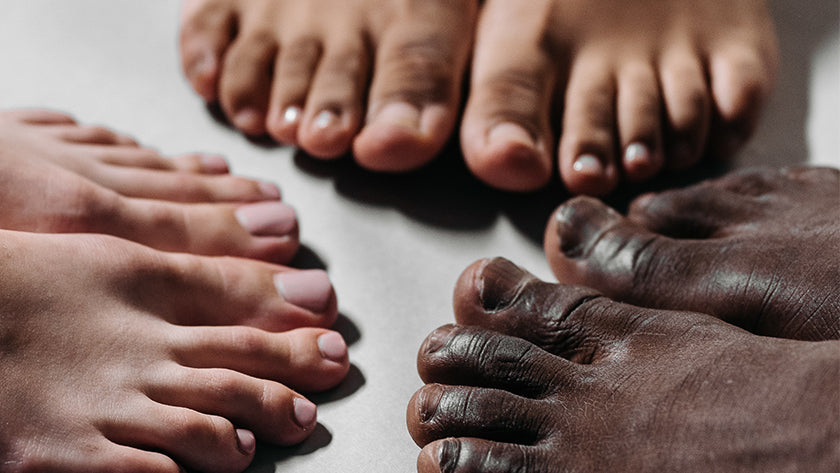
Can fungal spread on your own feet when you already have an infection?
It's already well known that fungal nails or athletes foot are contagious. Fungal infections can spread easily from one person to another. This is because fungal infections are caused by a type of fungus that can be easily spread through direct contact with infected nails or skin, or through contact with contaminated surfaces or objects. But can you infect yourself, when you're already infected? Let's find out in this new blog.
Fungal nail infections can spread to other nails when the fungus grows and multiplies, creating a new infection in a nearby nail. This can occur if you touch an infected nail and then touch another nail without washing your hands, or if you use tools, such as nail clippers, that have come into contact with an infected nail.
The infection can also spread to the skin around the nail. The same type of fungus that causes fungal nail infections can also infect the skin, causing a condition called tinea pedis, or athlete's foot. Athlete's foot can cause the skin to become red, itchy, and scaly, and may lead to the development of blisters or cracks in the skin. This can occur when the nail is damaged, allowing the fungus to enter the skin.
To prevent the spread of fungal infections to the skin or nails, it's important to treat any fungal nail infections promptly. Our Nail Mycosis bottle has a drop instead of a swab. This way you avoid touching the infection. It's also important to keep your feet and hands clean and dry, and to avoid sharing personal items, such as towels or socks, to prevent the spread of the infection and disinfect them regularly. With the Shoe & Sock Spray, you'll disinfect your shoes and socks properly. If you develop any symptoms of athlete's foot, such as redness, itching, or scaling of the skin, you should seek treatment as soon as possible to prevent the infection from spreading further.












